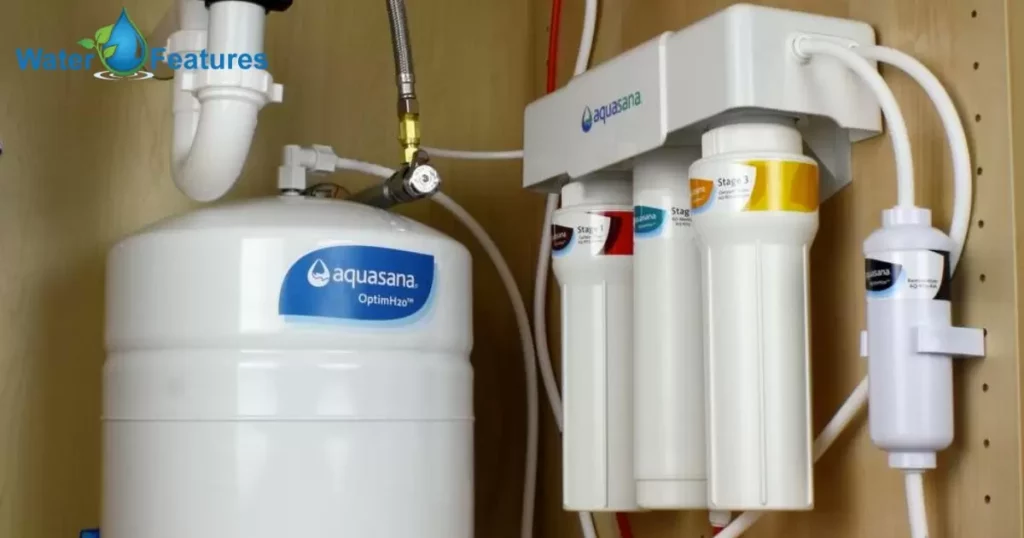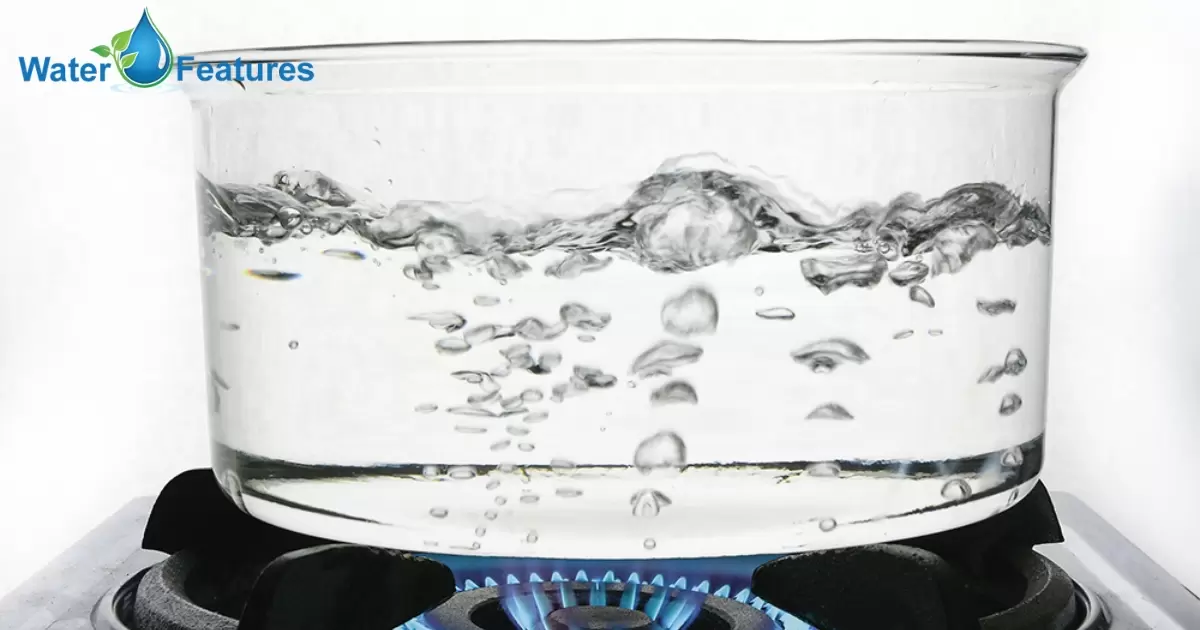Fluoride, in the context of tap water, is a chemical ion that occurs naturally in water sources or is intentionally added to promote dental health. It is a double-edged sword, as it aids in preventing tooth decay, particularly in children, but can also lead to dental and skeletal fluorosis when consumed in excess. Many individuals are concerned about the fluoride content in their tap water and seek ways to address this issue.
Fluoride, a common yet controversial compound in our tap water, has raised questions and concerns among many. One of the frequently asked questions is, Does boiling tap water remove fluoride? Fluoride is a dissolved ion in water, which means that, unlike particulate matter that can be filtered or separated by boiling, it can persist even after the water has been boiled.
Boiling water is a widely recognized method for making water safe to drink by killing or inactivating harmful microorganisms. It’s crucial to understand that while boiling is effective in removing certain impurities and contaminants, it may not be as efficient in eliminating all substances, including fluoride.
The Role of Fluoride in Water
Proponents argue that it helps prevent tooth decay, especially in children, while opponents raise concerns about potential health risks. Individuals at times notice that their hot tap water appears cloudy, causing concerns about the water quality and possibly leading to questions like, Is hot tap water cloudy? This cloudiness could be due to various reasons, including air bubbles or dissolved gases in the water that become visible when heated.
Controversy Surrounding Fluoride
The controversy surrounding fluoride stems from concerns about its potential adverse effects, such as dental fluorosis (a cosmetic issue causing tooth discoloration) and skeletal fluorosis (a bone and joint disorder). These concerns have led some people to seek ways to remove fluoride from their tap water, and one common question is whether boiling water effectively eliminates fluoride.
Does Boiling Water Actually Remove Fluoride?
Boiling as a Water Purification Method
Boiling water is a widely recognized method for making water safe to drink by killing or inactivating harmful microorganisms, such as bacteria and viruses. However, boiling is primarily effective in removing certain impurities and contaminants, but it may not be as effective in eliminating all substances, including fluoride.
Impurities Removed by Boiling
Boiling water is effective in removing or reducing various impurities, including
Bacteria and Viruses: Boiling water at a rolling boil for one minute or more can kill harmful microorganisms.
Chlorine and Chloramine: Boiling can dissipate chlorine and chloramine, which are often added to municipal water supplies for disinfection.
Suspended Solids: Boiling can cause solid particles to settle at the bottom of the container.
Types of Impurities Commonly Removed by Boiling
Boiling is particularly effective in reducing biological contaminants and disinfection byproducts. It can also help clarify water by removing suspended particles. However, it is less effective in removing chemical contaminants like heavy metals and certain dissolved minerals, such as fluoride.
Limitations of Boiling as a Water Purification Method
Boiling water, while a simple and cost-effective method to make water safe to drink, has limitations when it comes to removing fluoride
- Ineffectiveness: Boiling does not eliminate fluoride, instead, it may concentrate the fluoride content in the water as the water evaporates. This is because fluoride is a dissolved ion and not a particulate matter that can be filtered or separated by boiling.
- Wasted Energy: Boiling water solely for the purpose of reducing fluoride is not an energy-efficient approach, especially when more effective methods are available.
Given the limitations of boiling in removing fluoride, it is essential to explore alternative methods for those who are concerned about their fluoride intake.
What Are the Different Methods That Can Be Used to Remove Fluoride From Water?
There are various methods available for removing fluoride from water. These methods can be broadly categorized into two main groups: filtration methods and chemical methods.
Filtration Methods
Reverse Osmosis (RO): RO filtration is one of the most effective methods for removing fluoride from water. It forces water through a semipermeable membrane, blocking fluoride ions and other impurities.
Activated Alumina: Activated alumina is a porous material with a high surface area that can adsorb fluoride ions from water. It is often used in fluoride removal filters.
Bone Char Carbon: Made from animal bones, bone char carbon can effectively remove fluoride by adsorption. It is an eco-friendly option.
Chemical Methods
Calcium Precipitation: This method involves adding calcium-based chemicals to water, causing calcium fluoride to precipitate and settle. The water is then filtered to remove the solid particles.
Aluminum Sulfate: Aluminum sulfate can react with fluoride ions in water to form aluminum fluoride, which can be removed through coagulation and filtration.
Activated Carbon Filters: Some activated carbon filters with special adsorbents are designed to remove fluoride from water by adsorption.
Which Method Is the Most Effective for Removing Fluoride?
| Method | Description |
| Reverse Osmosis | Highly effective, removes fluoride and more. |
| Activated Alumina | Effective adsorption method for fluoride. |
| Bone Char Carbon | Eco-friendly option for fluoride removal. |
| Distillation | Energy-intensive, may not eliminate all fluoride. |
| Ion Exchange Resins | Exchanges fluoride ions for chloride ions. |
| Calcium Precipitation | Uses calcium-based chemicals to precipitate fluoride. |
| Aluminum Sulfate | Forms aluminum fluoride for removal. |
| Activated Carbon Filters | Specific filters designed to adsorb fluoride. |
Which Methods Don’t Work for Removing Fluoride From Water?
While some methods are effective at reducing fluoride levels, others do not work for this purpose. Here are a couple of methods that are not suitable for removing fluoride from water:
Boiling
As mentioned earlier, boiling water does not effectively remove fluoride. In fact, it can have the opposite effect by concentrating fluoride as water evaporates, making it less suitable for those seeking to lower fluoride levels in their drinking water.
Distillation
Distillation, though effective at removing various contaminants, may not be the most efficient method for fluoride removal. It can be energy-intensive and may not completely eliminate fluoride, especially if the water contains a high fluoride concentration.
Are There Any Benefits of Drinking Fluoridated Water?
Fluoride, when present in optimal concentrations in drinking water, has several benefits for oral health
Cavity Prevention: Fluoride helps prevent tooth decay by strengthening tooth enamel, making it more resistant to acid attacks from bacteria and acids in the mouth.
Public Health Impact: Water fluoridation has been recognized as one of the top public health achievements of the 20th century by the Centers for Disease Control and Prevention (CDC) in the United States.
Recommended Fluoride Levels in Drinking Water
The optimal fluoride concentration in drinking water, as recommended by health authorities, is typically in the range of 0.7 to 1.2 milligrams per liter (mg/L). This concentration is considered safe and effective in preventing tooth decay without causing adverse health effects.
It’s important to note that excessive fluoride intake can lead to dental fluorosis (cosmetic enamel mottling) and skeletal fluorosis (affecting bones and joints). These conditions typically occur at fluoride levels significantly higher than recommended.
Ways to Reduce Fluoride Exposure
If you are concerned about fluoride exposure, here are some steps you can take to minimize your intake
Stop Drinking Fluoridated Water
Consider using an effective water purification method to reduce fluoride levels in your tap water, especially if the fluoride concentration exceeds recommended levels.
Don’t Let Your Child Swallow Fluoride Toothpaste
Ensure that children do not swallow toothpaste while brushing their teeth, as this can contribute to excessive fluoride intake.
Do NOT Get Fluoride Gel Treatments at the Dentist
Some dental treatments involve applying fluoride gels. If you’re concerned about fluoride exposure, discuss alternative treatments with your dentist.
Is Reverse Osmosis the Best Water Filter?

Yes, reverse osmosis is considered one of the best water filtration methods for removing fluoride, effectively answering the question, Does boiling tap water remove fluoride? It efficiently blocks fluoride ions and many other contaminants, producing high-quality drinking water. Reverse osmosis systems are available for both countertop and under-sink installations and can be an excellent choice for households seeking to reduce fluoride in their drinking water.
FAQ’s
Does boiling tap water remove fluoride?
Boiling tap water does not effectively remove fluoride. It can actually concentrate fluoride as the water evaporates.
What are the recommended fluoride levels in drinking water?
The optimal fluoride concentration in drinking water is typically in the range of 0.7 to 1.2 milligrams per liter (mg/L).
What is dental fluorosis?
Dental fluorosis is a cosmetic issue that affects tooth enamel, causing discoloration or mottling. It can result from excessive fluoride intake during tooth development.
Conclusion
The question of whether boiling tap water removes fluoride has been addressed, and it is clear that boiling is not an effective method for reducing fluoride levels in drinking water. For those concerned about their fluoride intake, alternative water purification methods like reverse osmosis, activated alumina, and bone char carbon can provide more effective results.
It is important to understand the importance of fluoride in preventing tooth decay and its recommended levels in drinking water. Striking a balance between the benefits of fluoride for oral health and the risks of excessive intake is crucial. Additionally, taking steps to minimize fluoride exposure, especially for children, can help maintain good oral health without overexposing individuals to fluoride.











